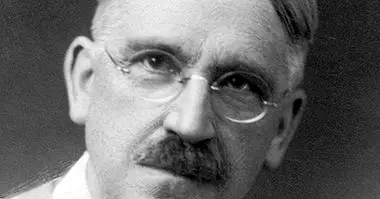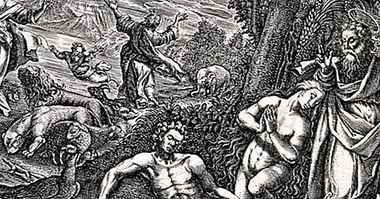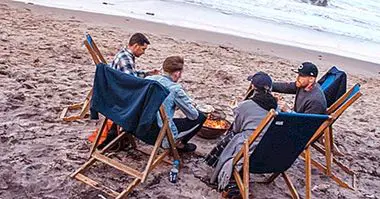The 12 most beautiful stories in the world (with explanation)
Probably many of those who read these lines remember fondly the moment when, as children, they went to sleep while their parents, relatives or caregivers told them a story. And this type of stories, often fantastic, often inspire illusion and offer us a unique world to get lost in addition to the moment of counting them involves an act of positive communication between child and adult.
There are many different stories in different cultures and societies, which transmit and let us see the various values, customs and beliefs that are valued in each of them. Given this great diversity throughout the world, throughout this article we will see a brief collection of some of the most beautiful stories in the world , as well as his lessons.
- Related article: "The 10 best Spanish legends (ancient and current)"
12 of the most beautiful stories in the world
Then we leave you with a dozen great stories from different parts of the world, of great beauty and mostly with some kind of moral, we can tell our children or just enjoy reading.
1. Little Red Riding Hood
"Once upon a time there was a young girl who lived with her mother in the woods, and who received the name of Little Red Riding Hood when she never took off a hood of that color that her mother had made for her. The girl had a grandmother on the other side of the forest, who was sick. For that reason one day the mother of Little Red Riding Hood He sent the little girl to come and bring a basket with bread, pastries and butter to her grandmother , although he warned her not to talk to strangers or get out of the way.
After saying goodbye, Little Red Riding Hood took the basket and started walking towards her grandmother's house, following the path while she sang. She was there when she met a wolf, who asked her where she was going in such a hurry. Still remembering what her mother told her, the young woman was not afraid of the wolf so she replied that she was going to her grandmother's house, which was sick. The wolf asked him where his house was, to which the little girl replied that in a clearing on the other side of the forest.
The wolf, who was already clear that he was going to eat Little Red Riding Hood, thought about eating the old woman as an aperitif, and he made a plan. He suggested to Little Red Riding Hood that in addition to the basket he should bring a bouquet of forest flowers to his grandmother. Little Red Riding Hood replied that her mother had told her not to go out of the way, but the wolf told him there was another way he could get there faster . Both separated, running the wolf to the grandmother's house. He deceived the old woman into thinking she was his granddaughter, after which he ate her and dressed in his clothes, then went to bed. Shortly after came Little Red Riding Hood, who knocked on the door. The wolf told him to pass, lying on the bed.
Little Red Riding Hood saw her grandmother very changed. -Abuelita, what bigger eyes you have- said the girl. -They are to see you better- answered the wolf. -Abuelita, what big ears you have- Caperucita said again. "They are to hear you better," replied the wolf. -Abuelita, what a big mouth you have- he said now for the third time. -It is to eat better! - the wolf cried, pouncing on the girl and eating a bite. After eating it, the animal decided to take a nap on the grandmother's bed.
However, there was a hunter nearby who heard what he thought was the cry of a girl. He went to the cabin and saw, astonished, the wolf napping with his belly swollen. Wondering the reason for that swelling, the hunter took a knife and opened his guts. There were Little Red Riding Hood and her grandmother, still alive, and she helped them out of the wolf's interior. After that and to give a lesson to the evil being, they filled his stomach with stones and sewed it again. When the wolf awoke, it felt thirsty and gutlike, something that made it go to the nearest river. However, when he stooped to drink he stumbled and fell into the water, where he was drowned by the weight of the stones. After that Little Red Riding Hood came home, promising never to disobey her mother again and not to talk to strangers again or to deviate from her path in the forest. "
This story is a classic known by almost all the western world , that works aspects like the obedience to the parents, the cunning and the precaution towards the strangers. It also tells us about the loss of innocence and the entry into the world of adults (the wolf has often been seen as a symbol of the sexual, and the red hood as a symbol of menstruation and passage to the adulthood of the girl that the portal)
2. The Fox and the Raven
"Once there was a crow perched on the branch of a tree, which had got a great and beautiful cheese and held it with its beak. The smell of cheese attracted a fox in the area . The intelligent fox, coveting the food, greeted the crow and began to flatter him, admiring the beauty of its plumage. He also told him that if his song matched with the beauty of his feathers, it should be the phoenix. The crow, flattered, opened its beak to show the fox its voice. However, while doing it the cheese fell to the ground, something that the fox took to catch it and flee. "
This fable is authored by Jean de La Fontaine , and in it the author lets us see the need to be cautious with those who flatter and flatter us in order to manipulate us or get something from us.
3. The cicada and the ant
"There was once, a hot summer, a cicada that in the shade of a tree did not stop singing, enjoying the sun and not wanting to work. His neighbor passed by, an ant which was working and carrying food for his home. The cicada offered to rest with her while she sang to him. The ant replied that instead of having fun he should start gathering food for the winter, which the cicada did not pay attention to and continued having fun.
But time passed and the cold of winter came. The cicada suddenly found itself cold, with no place to go and nothing to eat. Hungry, the ant came to the house to ask for help, since she had plenty of food. The ant replied that what the cicada had been doing while she spent long hours working. The cicada replied that it sang and danced under the sun. The ant told him that since he did that, he did now during the winter, closing the door.
This story is another of Aesop's fables that shows us the importance of valuing work , as well as the need to strive and persist in order to survive and prosper. It also establishes a critique of laziness and passivity.
- Maybe you're interested: "The 10 best short legends (for children and adults)"
4. The hare and the turtle
"Once upon a time, a turtle was walking along the road slowly when a hare approached him. She scoffed at his slowness and asked the turtle why it was going so slowly, to which the turtle replied that despite its slowness no one beat him in terms of resistance. Tired of teasing, the turtle proposed to make a race to the hare. She, taunting the turtle and thinking that she was going to get an easy victory, accepted the challenge, which would take place the next day.
When the day arrived, with the help of a fox who would mark the start and the goal and a crow who would act as referee, the race began. The turtle began to move slowly, while the hare shot out. Seeing the advantage he was leading, the hare he stopped to wait for her and make fun of her, until the turtle reached his position . Then the hare ran again to overtake him and stopped shortly after, repeating this situation several times and believing the hare would suffice in the end run a bit to get the first.
However, the hare ended up falling asleep in one of the waits. The turtle continued slowly but surely, getting closer and closer to the goal. When the hare woke up he realized that the turtle was about to reach the goal, and started to run. However, it did not arrive in time and the turtle reached its goal, being the first in his career. The hare never laughed at the turtle again. "
This story, rather a fable created in antiquity by Aesop, serves as an example of the value of effort and persistence symbolized by the turtle, as well as facing observe how arrogance and arrogance can lead us to lose , just like the hare.
5. The Three Little Pigs
"Once upon a time, there were three piglets brothers who lived happily in the depths of the forest, but who one day discovered that there was a wolf in the vicinity. That is why they decided to build each one a house that could serve as a refuge.
Each of them, with a very different character from each other, became a house with different materials. The first of them and more lazy was made a little house of straw, which ended quickly. The second piglet looked for a stronger material but could also use it to build quickly, using wood for the construction of his house. The third pig, the most hardworking, came to the conclusion that it was safest to build a brick house, even though it would cost much more to finish it.
Once the three had concluded, the three celebrated and sang, including songs like "Who fears the big bad wolf, the wolf, the wolf?". Hearing such chants, the wolf approached and saw the piglets, deciding to eat them. He rushed at them, which made the three take refuge in their homes. However, the wolf did not give up. He went first to the straw house, shouting to the pig that he lived it to open or blow and blow to the house to tear down. Since the pig did not open, the wolf began to blow, easily tearing down the house . The pig ran to take refuge in the house of his brother, the one who had wood. On this occasion he also shouted "I will blow and blow and this house will break down!".
The wolf began to blow with great force, and in spite of needing much more force finally managed to demolish the wooden house. The two little pigs went to the house of the most hard-working brother, taking refuge in it. There the wolf demanded to be opened, or else "I will blow and blow and this house will break down!". The wolf blew and blew with all his strength, but the third house was brick, very resistant, and did not yield. Determined to put an end to the little pigs, the wolf saw that this house had a chimney, and tried to sneak through it.
However, the little pigs had lit the fire, burning the wolf and howling with pain. The evil wolf fled back into the forest never to return. As for the pigs, the two laziest brothers thanked the third for their work and effort, learning an important lesson and subsequently creating each a brick house ".
Another of the most classic and well-known stories, the three little pigs teaches values such as hard work and its importance to thrive in life , indicating that it will be the core of our work and effort that will allow us to survive and develop.
6. Hansel and Gretel
"There was once a very humble family made up of a lumberjack, his wife and his two sons, Hansel and Gretel. The parents were constantly striving to bring food home, but there came a time when they were unable to continue feeding their children. That is why the parents decided to leave their children in the forest. The children cried, since they had heard the conversation, but Hansel promised Gretel to find a way back home. The next day, the father took the children to the depths of the forest, and when they fell asleep he abandoned them.
Upon awakening, Hansel and Gretel found themselves alone in the middle of the forest . However, Hansel had left stones along the way, so that following the trail they could return home. Surprised, the parents decided that next time they would go further into the forest. On this occasion Hansel could not collect stones, so he decided to leave a trail with bread crumbs. The next day, again, they were taken to the forest and abandoned there while they slept.
They began to look for the trail, but unfortunately they realized that it had disappeared: the birds of the forest had eaten them. Desperate and hungry, they began to wander. When they were about to faint, they suddenly found a house of bread and cake in the middle of the forest, with sugar windows and full of sweets. Famélicos, pounced on her. At that moment an old woman opened the door of the house, inviting them to enter nicely and promising them food and bed. That night the children ate well and asked to sleep indoors, although there was something strange about the old woman.
When the day arrived, the reason was discovered: the old woman was really a witch, who locked up Hansel and took Gretel as a maid, pretending to bait the child and then eat it. However, and even though initially Hansel trick the witch by pretending not to get fat , one day the old woman got tired of waiting and told Gretel to check that the oven was well lit and prepared, theoretically to knead bread but pretending to eat the children.
The little one pretended not to know how to do it , before what the witch insulted her and proceeded to look at it herself, sticking her head in the oven. Gretel seized the moment and pushed the witch inside, closing the door and causing the witch to burn. Then he freed Hansel, and when they were about to leave, they decided to see if there was anything useful in the witch's house. Surprisingly, they found valuable jewels and precious stones, which they took before attempting to return home. Finally, one day they managed to reach their home, and thanks to the witch's precious stones they got enough money to live happily and with their family the rest of their days. "
A popular story by the Grimm brothers that expresses the need to collaborate, loyalty and the importance of distinguishing reality from appearances , as well as highlights the usefulness of intelligence and ingenuity to overcome difficulties (both on the part of Hansel when looking for a means to return home and Gretel to pretend ignorant to end the witch.) It also reflects the loss of hope (on the part of the parents) and the perseveration and the maintenance of the faith (on the part of the children) in spite of facing difficult situations.
7. The six blind sages and the elephant
"There were once six blind elders of great learning, who had never seen or known what an elephant was. These wise men, unable to see, used touch in order to know the objects and beings of the world. One day, and knowing that his king had one of these animals in his possession, they humbly asked him to meet him. The sovereign accepted and brought them before the animal , to which the wise men came to recognize him.
The first of the wise ones touched one of the fangs of being, concluding that an elephant was sharp and smooth as a spear. Another touched his tail, thinking that the elephant was like a rope. Another came to the elephant's trunk, indicating that it was like a snake. The fourth touched the animal's knee, indicating that it was more like a tree. A fifth considered that the others were wrong, because he touched the ear of the pachyderm and came to the conclusion that the elephant is like a fan. The last sage touched the back, indicating that the elephant was really like a strong and rough wall.
The six wise men began to argue and fight to see who was right. On it they consulted another sage, who did enjoy the gift of vision , and after consulting him they realized that everyone had part of reason, having known only part of the same reality. "
This story of Indian origin makes us see how sometimes things are not true or false, but simply can exist perspectives different from the ones that can be so true like the ones we defend.
8. The witch and the sister of the Sun
"Once upon a time, in a distant country, there was a Tsar and a Tsarina who had as their son a boy dumb by birth named Ivan. They also had a stable boy, who from time to time told beautiful stories to the boy. One day, and when Ivan was already twelve years old, he went to the groom to tell him another. However, the groom told him something different than expected: he indicated that in a short time his mother would give birth to a girl, who would become a witch who would devour the father, mother and servants of the palace. The only way for Ivan to save himself would be to ask his father for his best horse and flee where the steed took him. Anguished, the young man ran to his father and, for the first time, spoke to ask him for a horse.
The king, happy to hear his son for the first time, gave him his best steed. Ivan rode on it and rode to where the animal took him. As time passed, she began to ask Albergue to different people she met: a couple of old women (who told her that since they had little time left to live, the time came when they finished weaving), a man called Vertodub (which could not help him since he would die once he pulled some oaks from the earth) and yet another, Vertogez, who could not help either, since the time would come once he had just turned over some mountains.
The young man wept and wept, disconsolate, until finally he arrived at the palace of the sister of the Sun. This welcomed him with kindness, treating him like a son. Ivan lived in that palace for days, but from time to time he cried because he had no news of his home. The sister of the Sun asked him several times why his tears, to which the young man initially answered that it was because the wind had irritated them (something that caused the Sun's sister to order the wind to stop blowing) However, finally the young man confessed what happened and asked him to return home. At his insistence, the Sun's sister gave him permission and entertained him with a brush, a comb and two apples capable of rejuvenating whoever ate them.
On the way back, the young Ivan again saw Vertogez, and seeing that there was only one mountain left for him to turn around and then die, he threw the brush on the ground. From him came new and huge mountains, so many that they were lost to sight. Vertogez was happy. Soon after and the road continued, Ivan found Vertodub about to pull the last three trees, after which he would die. The young man took out the comb and threw it in the field, and from there there were huge forests, something that made Vertodub happy and gave him more work to do. Later, Ivan He came to the old women, to whom he gave the rejuvenating apples . The old women ate them and they were young again, and in compensation they gave him a handkerchief which was able to create a lake by shaking it.
Finally, Ivan came home again. There her sister would come to receive him, with affection, and asked her to play the harp while she prepared the food. While doing so a little mouse came out of hiding, screaming at him to flee since his sister was grinding her teeth to devour him. The young man fled, staying the mouse playing the harp to distract the sister. Soon, the sister entered the room ready to devour Ivan, but he realized that his prey had fled.
He began to pursue Ivan, who, seeing that the alcazaba shook the handkerchief in such a way that he put a lake between them to get advantage. The witch crossed the lake and continued chasing the young man, passing near Vertodub. This, understanding what was happening, began to pile up the oaks that started to form a mountain that prevented the passage to the witch. Although it managed to gnaw the trees, it gave Iván great advantage. As the witch shortened distances and practically reached the young man, they approached where Vertogez was .
Understanding what happened, Vertogez grabbed the highest mountain and turned it right in the middle of the road that separated the brothers, blocking the witch. Despite this, it continued to approach Ivan little by little. Shortly before reaching it, both came to the doors of the palace of the sister of the Sun. The young man asked to open the window, something that the Sun's sister did. The witch asked that her brother be handed over, proposing that they weigh themselves in a peso: if the witch weighed more she would eat it, and if not, Ivan would kill her. The latter accepted, weighing himself first.
However, when the witch began to climb the young man took the weight to jump up, with such force that he reached the sky and found another palace of the sister of the Sun. There he would stay forever safe from the witch, who I could never take it. "
This story, by the Russian Aleksandr Nikoalevich, tells us about the importance of humility and consideration for others, as well as the idea of retribution for the good we cause: it is the old women, Vertodub and Vertogeb who through their actions prevent the Witch reach your brother, giving him time to get to a place where he will be safe.
We also see a social criticism , in which we are told about the relationship and respect towards people of different social condition: Ivan and his sister are noble, and while the first one is related to people of different nature and social position and does something for them, the second only it simply devours and pursues its objectives.
9. The owner of the light
"At the beginning of time there was no day or night, living the world in darkness and depending on the people of the Warao from the light of fire to find food. One day, a father of two daughters received the news that there was a young man who owned and owned the light. Knowing this, he gathered his daughters and told the eldest to go and look for the young man and bring him the light. The girl went in search of him, but took the wrong way and ended up arriving at the house of the deer, with which he played and then returned home. Not having gotten the oldest, the father made the same request to his little daughter. This, after much walking, finally arrived at the house of the young owner of the light .
Once there, he told her that he had come to meet him and to get light for his father, to which the young man replied that he was waiting for her and that he would now live with him. The young man picked up a box, opening it carefully. When he did, the light illuminated his arms and teeth, as well as the girl's hair and eyes. After having shown it, he kept it. The following days the young man and the girl had fun, playing with the light, and they became friends. But the girl remembered that she had come to seek the light for her father. The young man gave it to him, in such a way that the girl and her family could see everything.
After returning, the girl gave the light inside the box to her father, who opened it and hung it on one of the trunks holding the palafito (house built on the water that rests on the ground with trunks and stakes) familiar. The light illuminated the river and the surrounding terrain. This attracted the attention of the numerous villages around , many people come to observe it and resisting to leave being more pleasant to live with light.
There came a point when the father, tired of so many people, decided to put an end to the situation: he swatted the box and, after breaking it, threw it into the sky. The light went flying and became the Sun, while from the remains of the box came the Moon. This caused day and night to happen, but since both stars were flying at high speed (product of the father's launch) they were exceedingly short. Seeing this, the father took a giant turtle and, once the Sun reached the height of his head, he threw it telling him that it was a gift and that he expected it. The tortoise moved slowly, something that made the Sun wait for it. And that is why every day the Sun moves little by little through the sky, waiting for the turtle while it lights the world. "
This little-known tale comes from the indigenous Warao people in the Orinoco delta . It is a narrative that explains the origin of day and night and that offers us an explanation regarding its duration.
10. The bag full of stories
"Once upon a time, there was a boy named Lom, who was told by an elderly servant every night, many stories and stories, each night using a different and new story. Lom had known over the years a lot of them, being something that he boasted to his friends but never shared. These stories that never counted were accumulating in a bag, in his room. Years passed and Lom became an adult, who met a young woman with whom he ended up committing himself and whom he was going to marry.
The night before the wedding the old servant heard in the room of Lom a strange murmur, something that made him approach They were the stories, accumulated and crammed into the bag, which were furious. The stories asked the servant to let them out, planning many of them different revenges to ruin the young man's day: one would become a little whose waters would cause stomach pain, another proposed to become a watermelon that would give him a big headache , and another promised to transform into a snake and bite him. Given these plans, the old servant spent the night thinking how to save Lom.
When the day arrived, when Lom was about to go to town for his wedding, the servant ran to the horse and grabbed the bridles, being he who guided him. Thirsty, Lom ordered them to stop near a well that he had just seen, but the servant did not stop and they went on. After that they passed through a field full of watermelons, and although Lom again asked to stop the old man made them continue on their way without stopping. Once at the wedding, the servant watched at all times in search of the snake, but did not find it.
When the night came, the newlyweds went to their house, which the neighbors had covered with rugs. The old servant, suddenly, entered the room of the couple, who demanded angrily what he was doing there. However, after lifting the carpet in the room the three discovered a poisonous snake, which the old man took and threw out the window. Startled and scared, Lom asked him how he knew he was there, what the servant he replied that it was because they were a revenge plan on the part of the stories that had never shared . From then on, Lom began reading one by one the stories to his wife, something that would cause them all great joy, and over the years their children and their descendants.
This is a story of Cambodian origin that explains us the need to share what we know and what is special to us with those we care about , otherwise it can stagnate and get lost forever and even turn against us. Although the story refers to stories in themselves, these can also represent anything important to us, such as our emotions and feelings.
11. The shepherd and the wolf
"Once upon a time there was a shepherd who, being in the care of his sheep, was greatly bored while they were grazing. The young man, who spent most of the day alone with the animals, decided to do something to have fun. He ran to the village, shouting that a wolf was attacking his flock. The inhabitants ran quickly with hoes and sickles to help him. However, when they arrived with the pastor, they asked him what had happened. He told them that he had invented it due to boredom, in such a way that the people's alarm reaction had served him as entertainment.
The next day the pastor again did the same, something that made the farmers and villagers come swiftly. S was again a joke. The villagers were furious and went back to work, and the pastor did the same.
Upon returning to the flock the shepherd suddenly saw how some wolves really attacked the sheep. Surprised and frightened, he returned to the village shouting again that the wolves were attacking, this time for real. However, the inhabitants of the town assumed that they were also facing an action and ignored it, continuing with their chores. Finally, the wolves finished with all the sheep of the shepherd, without it being able to do anything or receive help. "
Another of the fables attributed to Aesop, this narrative expresses a clear idea or moral: the fact of continually lying will end up not trusting that person , although I end up telling the truth. Trust is something very valuable that costs to obtain and once lost it is very difficult to recover.
12. The ugly duckling
"Once upon a time, on a summer day, one leg was hatching its seven eggs and waiting to see them born. Their young used to be the most beautiful and admired by others, and a day came when the eggs began to open. Little were born six little ducklings, all of them cheerfully received by their mother and the spectators.
However, the last and greatest of all would take a little longer, something that would draw the attention of everyone (including their newborn siblings). Finally, a cheerful duckling emerged from the egg, which, however, was very ugly compared to the others and did not even look like a duck. Everyone made fun of him, and even the mother pushed him aside and left him aside, something that would cause him much suffering.
As the days passed, things did not improve, since they grew in such a way that their ungainly appearance increased and their movements were slow and clumsy. The jokes, including those of his brothers, and the contempt of his mother made him finally decide to flee from the farm where he lived. At first he took refuge in another farm nearby, but soon discovered that his owner just wanted to eat him and also fled from there. Shortly after winter came, the poor duckling had to endure alone and hungry, but managed to survive until spring.
One day, he came to a pond where he would see some beautiful birds which he had not seen in his life: they were graceful and slender swans. Although he doubted that they would let him, the ugly duckling asked them if he could bathe with them, to which the swans replied not only that he was, but that he was one of them after all. At first he thought they were making fun of his ugliness, but the swans made him look at his reflection in the water. There, the ugly duckling could observe that it was not such, but that during the winter it had finished developing, being now a beautiful swan. Finally, the ugly little duckling had finally found a place where they accepted him, at last among his own, and he could be happy the rest of his days. "
A well-known children's story by Christian Andersen that allows us to remember the importance of humility and kindness, to accept differences with others and not to judge others because of their physical appearance or our personal prejudices. It also reflects the effort and development, in such a way that some hard beginnings are reflected for the poor swan but he managed to grow beautiful, big and strong.
Bibliographic references:
- Aller, M. (2010). Around the world in 80 stories. [On-line]. Available at: //www.educacontic.es/blog/la-vuelta-al-mundo-en-80-cuentos.
- Amery, H. (2000). Folk tales of the world. Usborne Publishing, USA.
- Baxter, N. (2004). Around the world in eighty stories. 2nd Edition. Delphi editions.



















